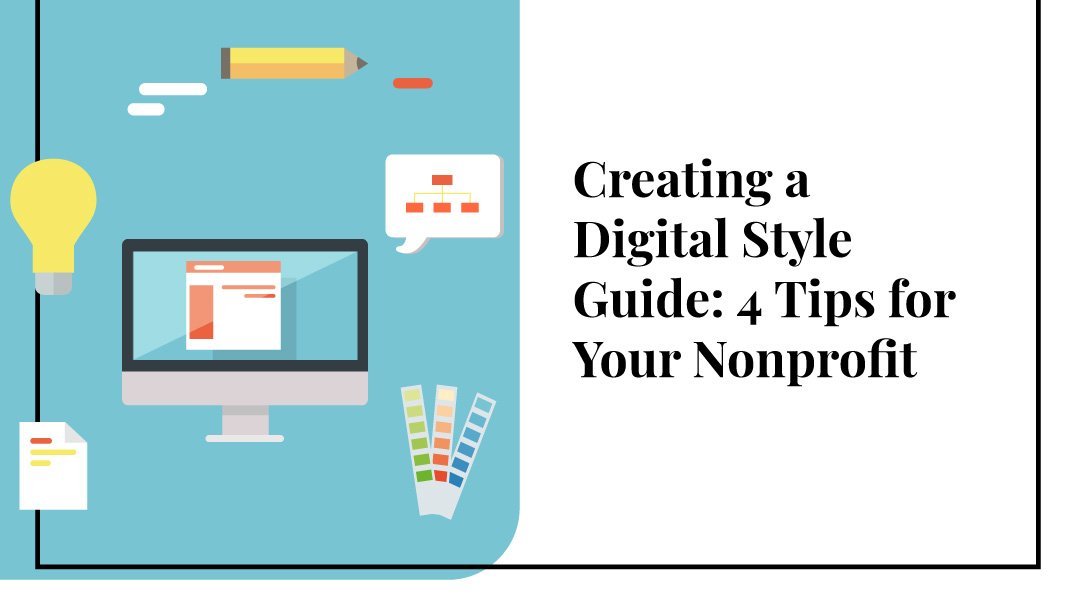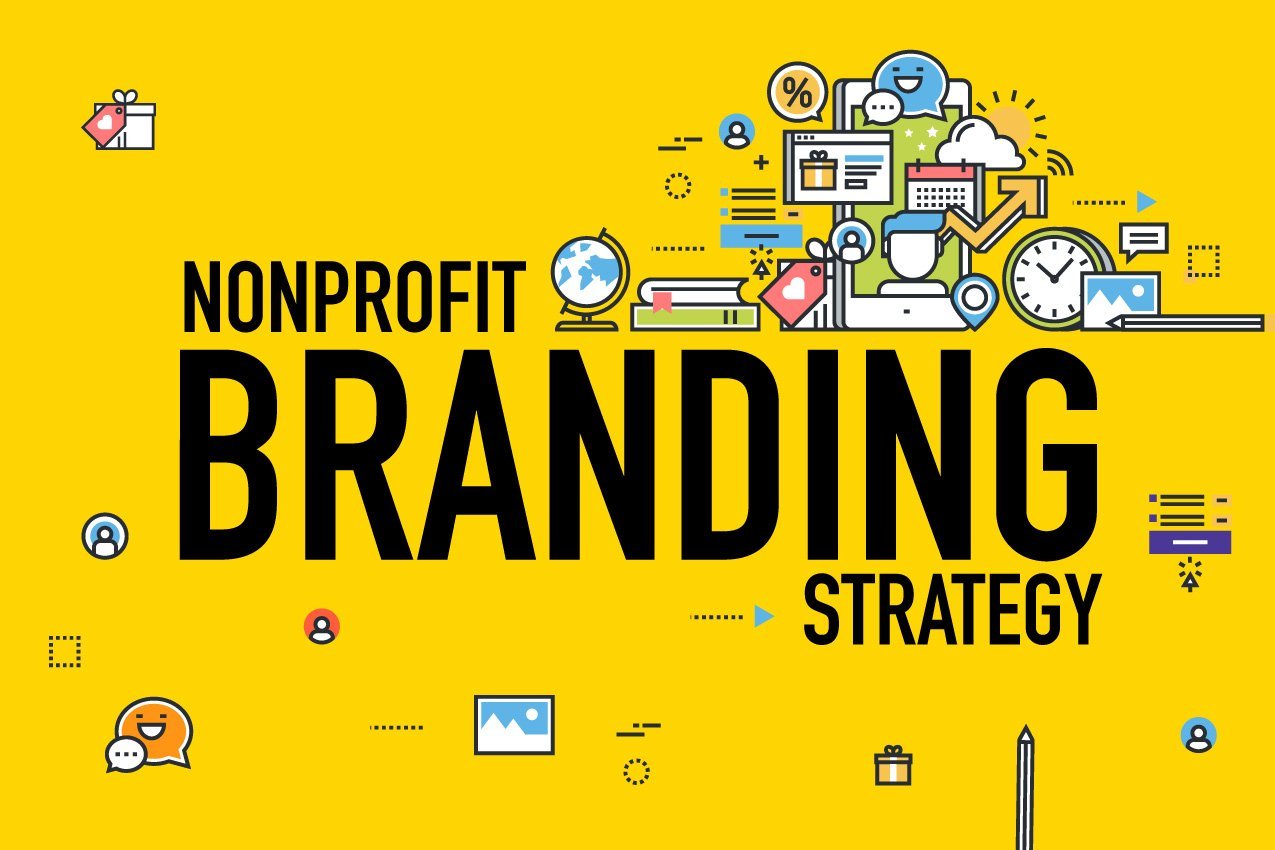
This blog is dedicated to scaling your nonprofit’s revenue.
Filter by Category:

Are you playing defense or offense with your nonprofit's money?
One of my favorite client's uses a sports metaphor for everything! I've learned so much about sports I knew nothing about! Thankfully he's learned lots from me too as he's added 7-figures of gen-ops revenue to his bottom line.
So, today, I'll ask you . . .
Is your nonprofit playing defense or offense with your money?

Creating a Digital Style Guide: 4 Tips for Your Nonprofit
In order for your nonprofit to engage supporters and bring in funds, crafting a solid marketing plan is essential. While your organization’s exact content strategy will vary somewhat based on your audience, you’ll likely be able to reach large numbers of supporters through digital marketing channels like your website, email, and social media.
Online engagement with nonprofits has been increasing in recent years. But with the amount and variety of information that potential supporters have access to on the internet, your organization will need to work harder to stand out from similar nonprofits and promote your cause.
To make your marketing reflect your nonprofit in a cohesive, memorable way, you’ll need to establish a distinct brand, which encompasses the messaging you use across all platforms as well as the look and feel of your marketing materials. Putting together a digital style guide will help keep your organization’s branding consistent from one platform to the next and tie each piece of content you create back to your overall digital strategy.
In this article, we’ll walk through four tips for creating an effective digital style guide:
Define your nonprofit’s messaging clearly.
Understand your organization’s audience(s).
Highlight visual elements of your branding.
Take all your marketing channels into consideration.

5 Year-End Virtual Fundraising Ideas
The end of the year is the perfect time to amp up your fundraising strategy. With so many holiday-themed opportunities and giving days, your nonprofit can significantly increase its revenue and finish out the year strong.
As a nonprofit professional, you understand how much work and planning can go into an event fundraiser, from booking a venue to coordinating catering. Plus, with so many people traveling during the holidays, it can be hard to nail down a time when the most people would be able to attend. But, did you know that you can make the process much easier by planning a virtual campaign?
A virtual fundraiser can be just as—or even more—engaging than an in-person event and offers your supporters the flexibility to participate from anywhere in the world. This way, you can expand your nonprofit’s reach and make the fundraising process more convenient for you and your donors.

Fundraisers Must Constantly be Educators
Recently I was sitting in an interview with a candidate for a potential leadership position within a nonprofit. This is a longtime client that's growing by leaps and bounds. And they'd identified a super sharp individual who’s coming out of corporate as a potential candidate.
And although the majority of the job description isn't fundraising, there will be some donor interface. The topic of fundraising came up twice . . .
First comment: “I don’t want to stand on a corner and beg for money.”
And…
Second comment: “I hate begging companies for gift cards. I had to do that for my kids' school.”
You know, people wouldn’t hate fundraising if they actually understood what it REALLY is.

4 Donation Tools to Maximize the Donor Cultivation Cycle
The donor cultivation cycle is a model that represents the continuous process of identifying new prospects, turning them into donors, and launching stewardship strategies to retain them and bring them closer to your nonprofit.
Essentially, donor cultivation is an exercise in relationship building—and the art of effective relationship building depends on a variety of tools and best practices. For example, a robust donor communication plan is one of the cornerstones of donor cultivation and, subsequently, continued success for your nonprofit.
Fortunately, you don’t have to tackle the tough task of donor cultivation without help. There are plenty of software solutions you can leverage. In particular, we’ll focus on the following donation tools that will help streamline cultivation for your nonprofit:
Nonprofit Payment Processor
Online Donation Page
Peer-to-Peer Fundraising Platform
Matching Gifts Database
These donation tools will allow you to more effectively bring in online donations. Additionally, you can leverage their unique benefits to strengthen your cultivation strategies, steward donors, and retain support.

Nonprofit CEOs: You need to be comfortable spending more money to raise more money
If your development team kinda raises the same amount of money every year and you rarely have enough unrestricted cash to build your reserve, you don’t need more fundraising activities.
Really - no new grant, appeal, event, board member, or even shout-out from Oprah.
What do you need?
You need more gas in the engine.
You need to know you’re spending enough money. Enough money that generates the dollars you need to even think about fulfilling your strategic plan.
In one word, OVERHEAD.

How to Grow Your Nonprofit Organization by Investing in Overhead
Picture this . . .
MacKenzie Scott just gave you $10M. Your leadership team gathers to discuss where the funds can be used for maximum impact. . .
Will you start new programs? Maybe.
Invest in technology to deliver current programs faster and further? Probably.
Replicate your local model through the region? Pretty cool.
If it were me? I’d advocate for a hefty overhead allocation.
Why?
Because steady and growing investments into both administrative and fundraising are likely the two areas that have trailed behind for too long. Sometimes, decades.

Fundraising Consistency is Key to Donor Cultivation
What do 81% of major donors have in common?
It takes 6-24 months from prospect identification to gift close.
Yes, process that for a moment.
Imagine that the donor you met yesterday may not give until next Fiscal Year.
Right. Kinda feels like a sock in the gut.
So, what to do?
PIPELINE.
PIPELINE.
PIPELINE.
Today’s pipeline means YOU REACHING your revenue goals in two years.
There’s no quick fix.

Nonprofit Leaders: Is your fundraising team hiding?
Are your fundraising staff or board members hiding from your donors? To answer why it’s important to ask that question you’d have to ask my client, Emma whose $100 donor just gave $50,000.
Yep, you read that right.
That's a 500X gift size.
Back to this concept of hiding. There are lots of reasons we hide…here are examples:
🗨️ “First I’ve got to get my [insert: database, major donor pitch deck, annual appeal, leave-behinds or board] ready and THEN, I can go talk to that donor.”
🗨️ “What would I even say to them? What’s my reason for reaching out?”
🗨️”I don’t have time to go meet everyone in person, so let’s just send an email or letter.”
🗨️ “I hope they don’t ask me about the budget or percentages.”
🗨️ “Yes, we solicit our donors. We make asks at events.”

How to Use Your Website to Engage Supporters: 3 Tips
Your website is a core location where supporters will take action, whether they’re donating, signing petitions, or attending virtual events. Every single time someone lands on your site, it’s a conversion opportunity.
But is your website working as well as it can to meet your supporters’ online engagement expectations and to inspire them to take action for your cause?
In this guide, we’ll consider aspects of the supporter's digital experience, including finding your site, exploring engagement opportunities, and taking action. We’ll also cover the following tips for engaging supporters at each step in the process:
Use SEO strategies to help supporters find your content.
Share a variety of engagement opportunities.
Make it as easy as possible to take action.

The Importance of Time Allocation for your Fundraising Team
Imagine your Development Director just told you they only need to work 30 hours per week to reach their 7-figure annual goal.
Yep. That happened.
Why such a confident statement from my client I’ve been coaching for a few years?
Well, he’s consistently done it. He's exceeded his goal every year for the last three years.
How? He…
➡️learned how to be himself - led with his natural ability to be relational.
➡️realized the financial conversations followed pretty easily.
➡️allowed the top 50 relationships take.all.the.time.they need
➡️built trust which led to the donor comfortably discussing wealth
➡️perfected soliciting donors for their best gift and stopped leaving money on the table
➡️secures 5- and 6-figure gifts regularly
The biggest challenge I hear from fundraisers is that they don’t have enough time in their day to pivot into relational fundraising.
Can I be frank? We all have the same amount of time in our day. It’s the time allocation that needs to be fixed.

What Goes Into an Effective Nonprofit Branding Strategy?
Many people believe a nonprofit’s brand is simply their visual identity. Although visuals play a key part in your brand, it’s important to recognize that your branding strategy goes deeper. It impacts your fundraising strategy, internal and external communications, and overarching identity.
At its core, your nonprofit brand strategy plays a role in how your organisation expresses your purpose and values.
For example, on your nonprofit website, you’re likely making a conscious effort to use your brand to communicate with your audience about your mission and programs. But when you send an email to your coworker, you probably don’t notice how your brand is incorporated. The reality is that, no matter what channels or forms of outreach you use, your brand shines through everything you do because you are essential to the brand.
For those with a previously narrow view of nonprofit branding, this idea naturally leads to the question: What is a nonprofit brand?

What does a virtual Chief Information Officer (vCIO) do and why would you want one?
The Nonprofit vCIO
The term virtual Chief Information Officer (vCIO) has been around for well over a decade now, but even today, if you ask ten different people what a vCIO does you may well get ten different answers.
This article does not claim to be the definitive answer to the question of what a vCIO does, but we will do our best to explain:
How the vCIO role emerged
The kinds of things a vCIO does
What value a vCIO can provide to a nonprofit
Why a nonprofit might want to engage a vCIO
What qualities to look for in a potential vCIO
